Installing Windows on an Xbox One APU: The Chuwi Aerobox Review
by Dr. Ian Cutress on December 24, 2020 9:45 AM ESTCPU Benchmarks, Power, Temperature, Noise
For office productivity, there’s no getting around the fact that these are Jaguar cores. Coupled with the memory bandwidth means that flicking between the basic documents can be somewhat laggy, and this isn’t really a system for anything other than email and web browsing. We still put it through our test suite, and the full range of tests were conducted. A few of them are highlighted here.
For reference, the Athlon 5370 mentioned here is a quad-core Jaguar.
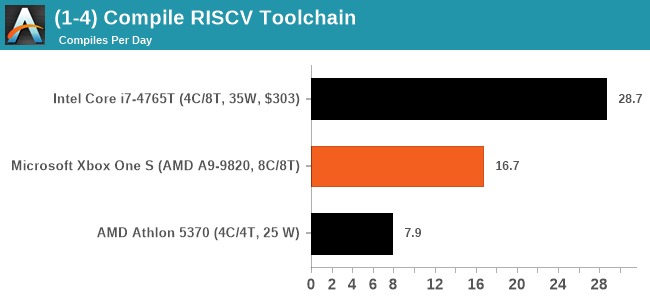
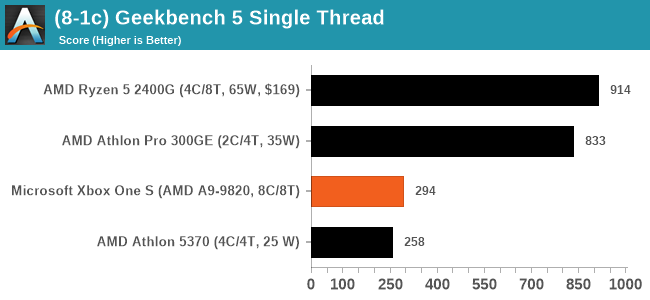

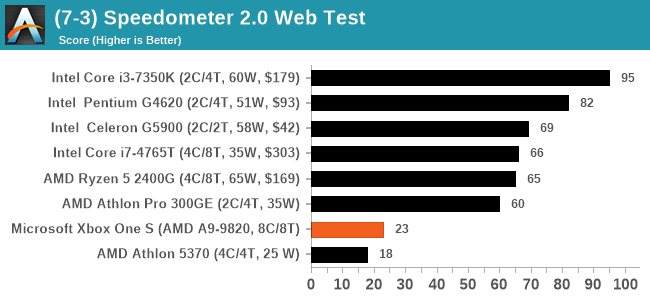
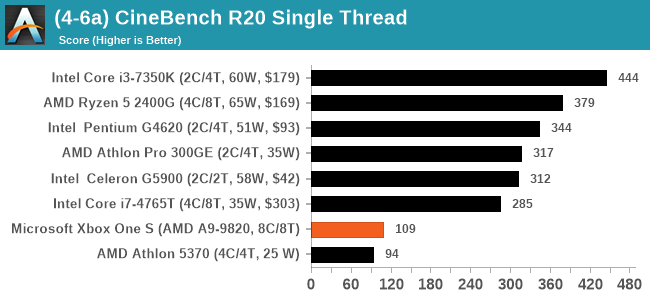
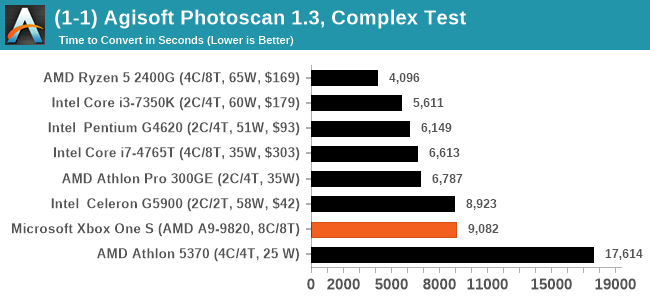

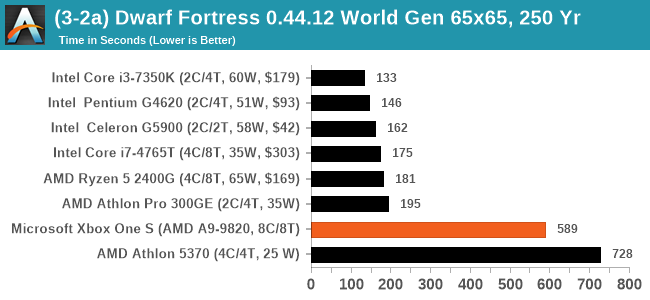

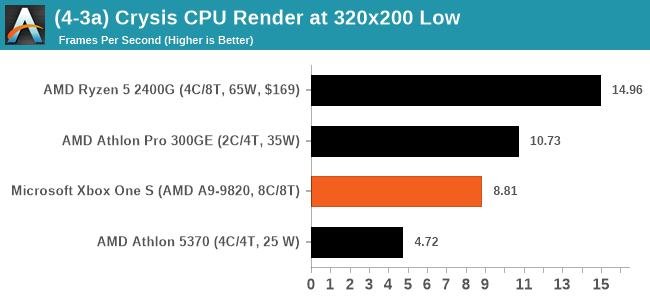
Power, Temperatures, Noise
I will say a few words on power and temperatures.
Our normal tools for extracting power do not work on this embedded processor, likely a function of its age (similar Jaguar desktop processors that were public have the same issue), however we were able to take some wall measurements.
At idle, we saw power consumption in the 65-70W range. This is fairly high for a HTPC, so we would suggest not leaving it turned on when not in use. During our Borderlands 3 gaming, the system power hit 150 W, which should actually be clipping the power supply that is only capable of 150 W. This may be a limiting factor in gaming performance as a result. During high CPU loading, the total system power only went up to 85 W or so, showcasing that the GPU is the key component here.
For temperatures, before we replaced the paste, the system would peak at 75ºC regardless of load, and still offer full CPU frequency. After applying our own paste, that dropped to the 62-68ºC range. All throughout, the fan on the cooler never ramped up enough to be noticeable at a distance of a couple of meters. The one time the system had an odd boot, the fan did spin to 100% and was very loud, but after rebooting it came back as normal.










101 Comments
View All Comments
Oxford Guy - Friday, December 25, 2020 - link
Polaris was a low-end design when it was released and it was rehashed endlessly.Jorgp2 - Friday, December 25, 2020 - link
Jaguar has a higher IPC than Piledriver.Oxford Guy - Friday, December 25, 2020 - link
That’s now what I had read but okay. Was there time to update the design beyond Piledriver in time for the “consoles”?And, if Jaguar really was so competitive then why did AMD use Piledriver, Steamroller, and Excacator?
jjem002 - Saturday, December 26, 2020 - link
They continued with Piledriver and such since they could clock 50%+ higher than jaguar, so in the desktop space the performance lost from IPC could be made up for by increasing the power limits.AntonErtl - Saturday, December 26, 2020 - link
As someone pointed out, clock rate matters as much as IPC; Piledriver has up to 5GHz (4.3GHz @ 95W), while Jaguar was available only up to 2.4GHz (Opteron X2170).As for IPC, I can only give you Bobcat (AMD E-450) and Excavator (Athlon X4 845) numbers. On our LaTeX benchmark, I see IPC=0.97 on the Bobcat and IPC=1.35 on the Excavator, with the overall result that the Athlon X4 845 runs the benchmark 3.2 times as fast as the E-450.
Supposedly Jaguar has 15% higher IPC than Bobcat and Excavator has also some IPC advantage over Piledriver, so maybe Jaguar has roughly the same IPC as Piledriver.
Oxford Guy - Saturday, December 26, 2020 - link
"so maybe Jaguar has roughly the same IPC as Piledriver"That makes more sense. Since Piledriver was a very unoptimized design it seems very reasonable to conclude that better performance could have been had from the CMT path, had AMD bothered to do it. Instead, AMD went cheap, both for the "consoles" and in how it did Steamroller and Excavator. Similarly, that was us getting Polaris forever.
Piledriver was designed, intentionally, to rely on high clocks to be relevant. The thing is, though, it could run at a good clock (see the 8320E) with decent power consumption. I doubt that Jaguar had anything to offer beyond smaller die size on a cheap inferior node (28 nm bulk).
Maybe that's impressive to some but it doesn't impress me. The "consoles" with their super lame Jaguar design, were a drain on the PC gaming platform. People paid to be suckered.
Gigaplex - Thursday, December 24, 2020 - link
The fact it's impossible to get drivers for this suggests that this is not an AMD sanctioned release. It's a deal-breaker for Windows usage. It would be interesting to see if the Linux drivers work with it.Alistair - Thursday, December 24, 2020 - link
Come on Microsoft, release the Surface desktop already, build it on the Series S's modern 7nm CPU. $300 for the console, charge $600 for the PC, I'd buy a ton of them.dontlistentome - Saturday, December 26, 2020 - link
Me too. Dinky case, multiple monitor output and quiet fan please. Maybe a square version of the Series S in sensible matt black.zodiacfml - Thursday, December 24, 2020 - link
saw this on aliexpress back then but a quick search on its performance easily makes this a pricey and environmentally unfriendly paperweight. i find it hard to believe Chuwi would bother with this. they're better off with those old Xeon processors, plenty availability and performance though discrete graphics won't be an option for Chuwi.